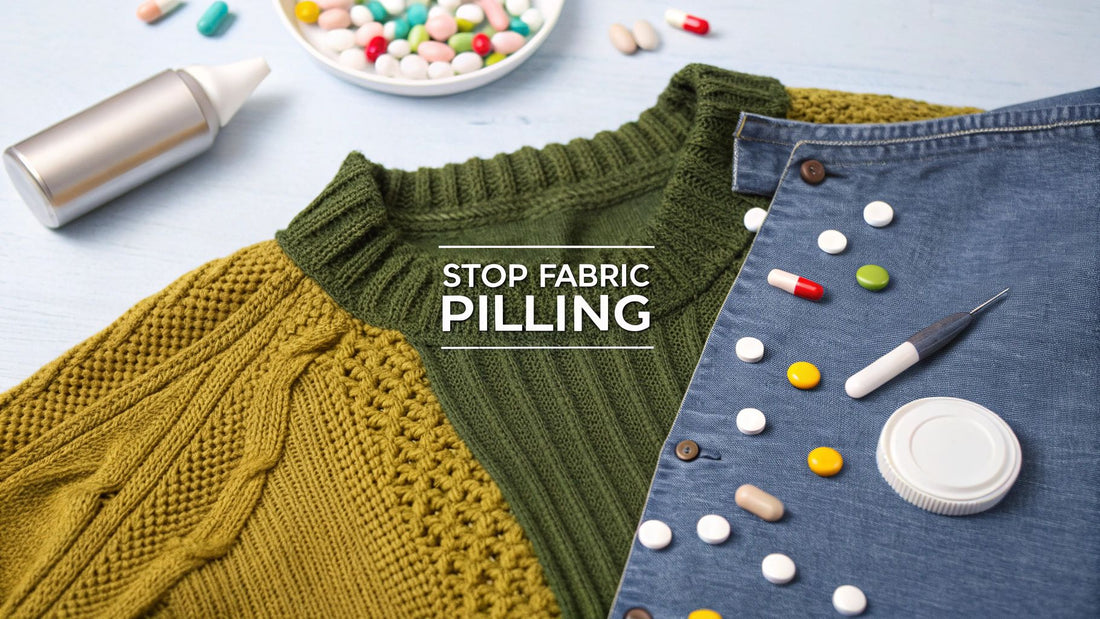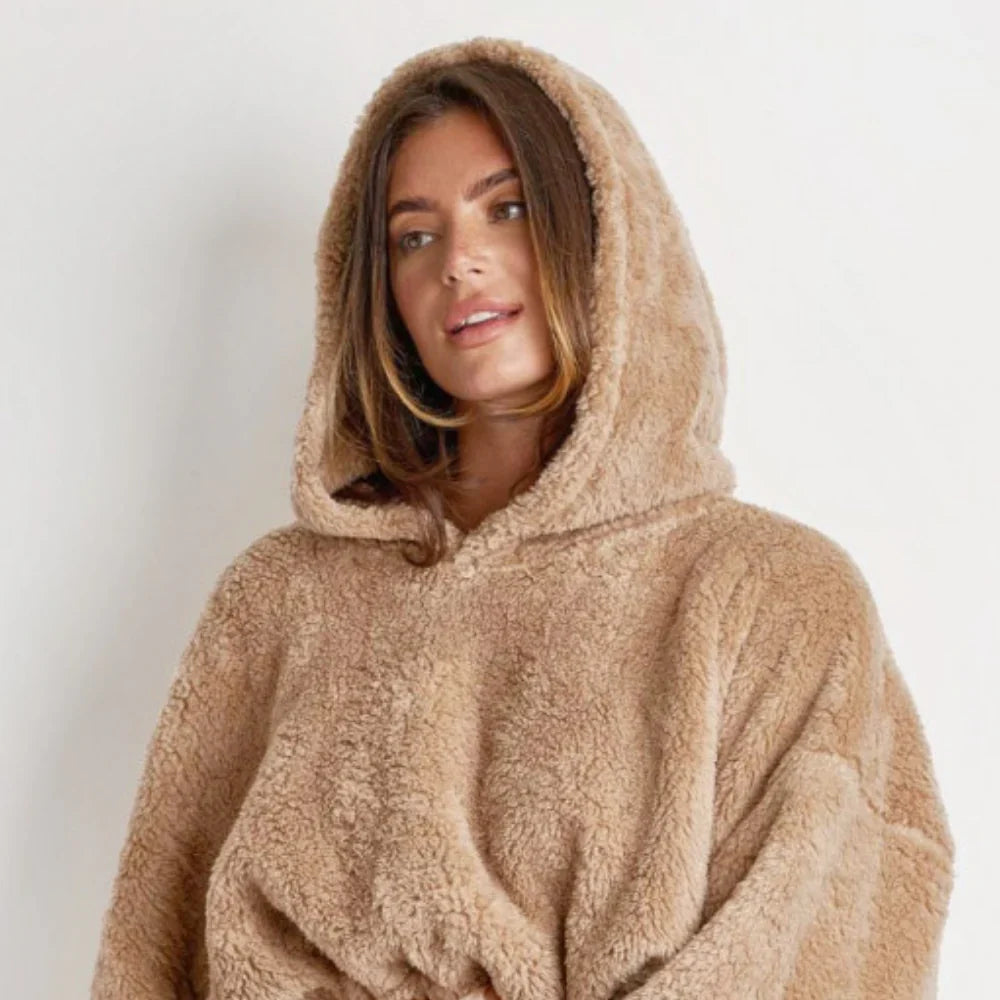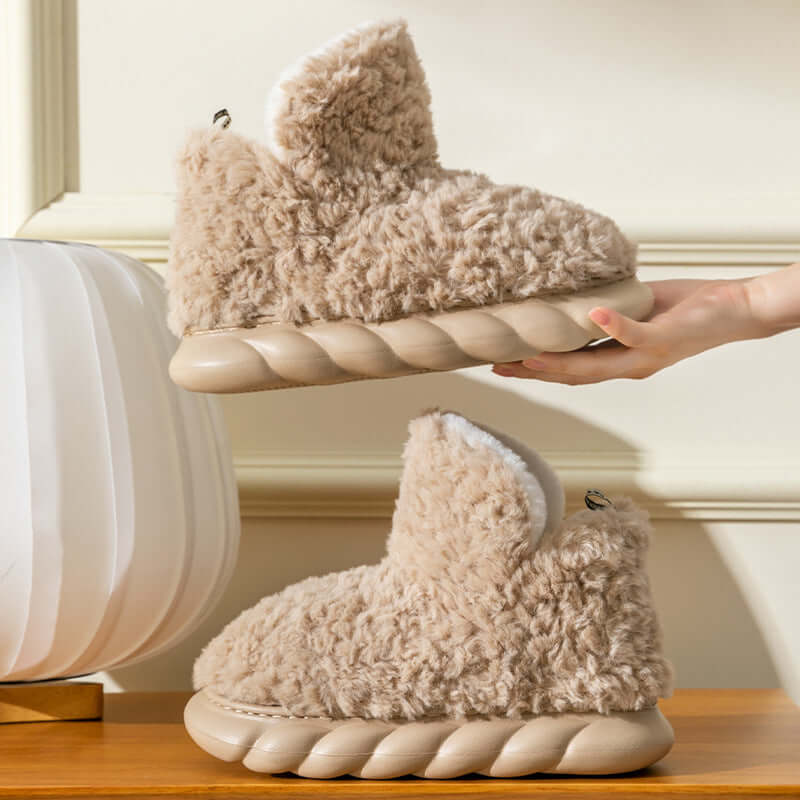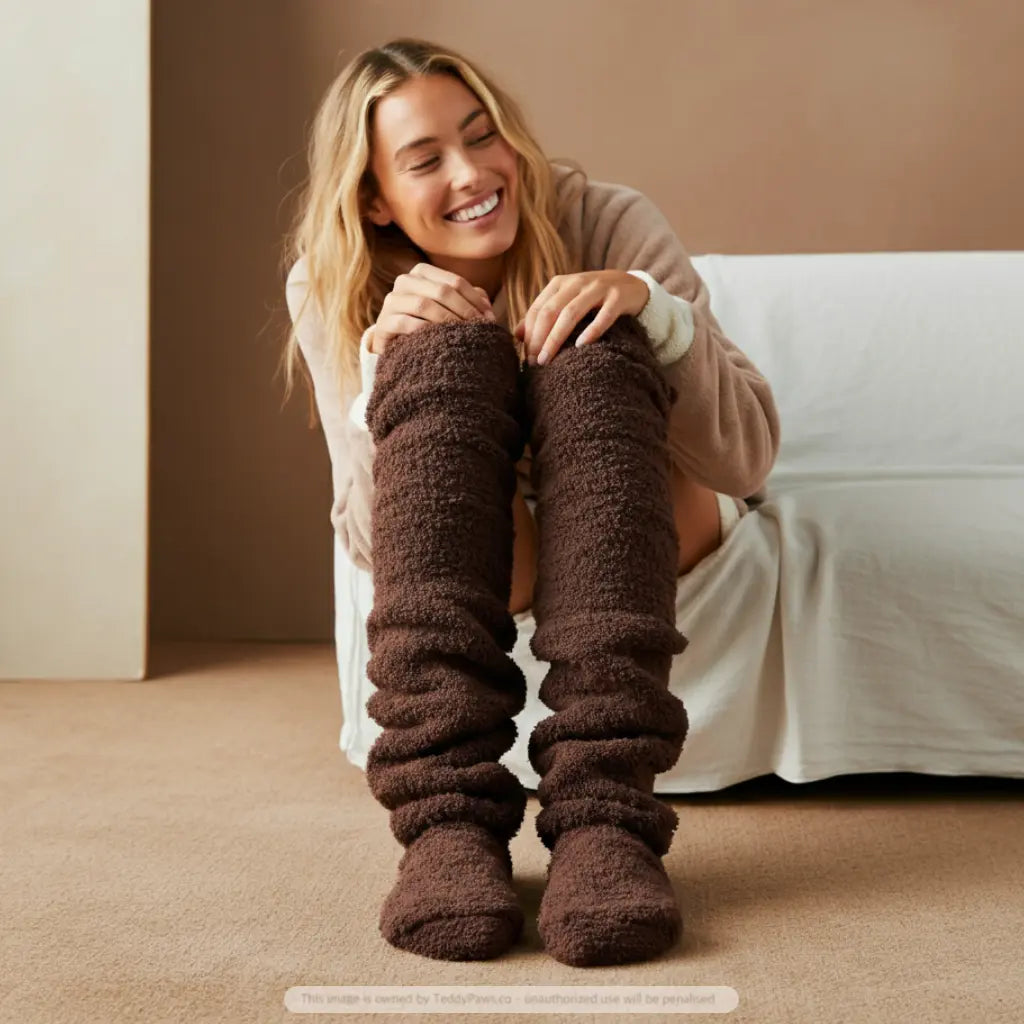
What Causes Fabric Pilling and How to Stop It
Share
It’s a frustratingly common story: you buy a brand-new sweater, wear it a few times, and suddenly it looks old, tired, and worn out. The culprit? Those tiny, fuzzy balls that pop up on the surface, a phenomenon known as fabric pilling.
At its core, pilling is caused by friction. When the surface of a fabric is rubbed, weaker or shorter fibers break loose. Before you know it, they tangle together, forming a little pill that makes your clothes look cheap.
Why Your Favorite Sweater Is Covered in Annoying Pills
Finding those little bobbles on a piece of clothing you love is a real letdown. It instantly makes a garment look tired and makes you feel like you wasted your money. But this isn't just bad luck—it's the predictable result of a fabric's DNA and the daily wear it endures.
The good news? Once you understand what’s causing the problem, you can stop it in its tracks.
This guide is your action plan. We'll reveal the science behind pilling, pinpoint which fabrics are most likely to betray you, and show you exactly how to reclaim your wardrobe from those pesky fuzzballs for good. You don't have to settle for a worn-out look ever again.
The Main Culprits Behind Pilling
Let’s get straight to the point and look at the three big factors working against your clothes. Each one plays a critical role in determining whether your favorite fabrics stay smooth or turn into a fuzzy, disappointing mess.
The real problem isn't just one thing, but how fiber type, fabric construction, and daily wear team up against your clothes. A loosely woven fabric made from short fibers is practically guaranteed to pill the moment it meets everyday friction.
It's this toxic combination that seals the fate of your garments.
Here's a quick look at the three main troublemakers and how they contribute to the problem. By understanding them, you're already one step closer to making smarter purchasing decisions and protecting your clothes.
The Three Main Culprits Behind Fabric Pilling
A quick summary of the primary factors that cause those frustrating little fabric balls on your clothes.
| Cause | How It Contributes to Pilling |
|---|---|
| Fiber Type | Short, weak, or synthetic fibers are more likely to break free and tangle up. Stronger fibers can even act as an anchor, holding the pill firmly in place. |
| Fabric Construction | Loosely woven or knitted fabrics give fibers more freedom to move around and rub against each other, which is the perfect recipe for pilling. |
| Friction & Abrasion | Everyday life—walking, carrying a bag, or even a simple wash cycle—creates the friction that pulls fibers loose and rolls them into pills. |
Now that you have the high-level view, let's dive into each of these factors to see how to outsmart them.
The Hidden Science Behind Why Fabrics Pill

To really understand what’s happening with those annoying fuzzballs, we have to zoom in to the individual fibers that make up your clothes.
Imagine making a rope. If you weave it from long, strong, continuous strands, you get a smooth, tough rope that lasts. But what if you just pressed together a bunch of short, fluffy bits of cotton? With the slightest friction, that second "rope" would start to fray and fall apart.
That's the exact principle behind the yarn in your clothes. The length and strength of the fibers basically predetermine a garment's destiny. Fabrics made from short, staple fibers are destined to pill because those tiny ends can easily work their way out of the yarn’s twist when they get rubbed.
Fiber Length: The Deciding Factor
It all comes down to how securely each fiber is anchored inside the yarn. Long, continuous filaments—like you see in silk or some synthetics—are locked in place, leaving almost no loose ends to get snagged. On the flip side, short fibers have to be twisted together really tightly just to create a stable yarn in the first place.
It’s a lot like hair. A long, smooth ponytail tends to stay neat and tidy. But short, layered hair? It's much more likely to have flyaways and bits sticking out. We're talking about the same concept, just on a microscopic level.
The crucial takeaway is this: pilling isn't some random defect. It's a built-in characteristic of fabrics made with short-staple fibers that haven't been spun or woven tightly enough.
This fundamental difference is why some materials are famous for pilling while others seem to stay smooth forever. To get a better handle on all the material factors at play, it's worth exploring these essential fabric characteristics.
Why Blends Are Often The Worst Offenders
You'd think blending different fibers would create a stronger, better fabric. And sometimes it does! But other times, it creates the absolute perfect storm for pilling. This is especially true when a strong synthetic fiber gets mixed with a weaker natural one, like in a classic polyester-cotton t-shirt.
Here’s the disastrous partnership that forms:
- The Weak Fiber Breaks: The softer, weaker cotton fibers are always the first to give up under friction. They snap, pop out from the surface, and immediately start tangling up.
- The Strong Fiber Anchors: But the tough polyester fiber doesn't break. Instead, it acts like a tiny, unbreakable anchor, holding onto that broken tangle of cotton and locking it into a tight little ball on the surface.
This is exactly why the pills on blended fabrics can feel so stubborn and impossible to remove. The weaker fibers break away, but the stronger ones refuse to let go, creating those tenacious little bobbles.
Understanding this science is your first real step toward winning the war on pilling. It helps you read clothing labels not just for washing instructions, but as a crystal ball for predicting a garment’s future. It gives you the power to avoid clothes that are, by their very nature, designed to fail.
How Daily Life Is Ruining Your Clothes

While the type of fiber sets the stage for disaster, the real villain behind those annoying little fabric balls is friction. It’s the constant, unnoticed rubbing and abrasion from your everyday life that’s turning your favorite clothes old before their time.
Think about it. The strap of your crossbody bag swinging against your hip, your seatbelt pressing across your chest, even just resting your elbows on a desk—these are all pilling hotspots. Each of these repetitive movements acts like fine-grit sandpaper, yanking at the fabric’s surface and coaxing those shorter fibers to break free and get tangled.
You’re paying for beautiful garments, only to have them worn down by simple, unavoidable actions. This is the hidden cost of just living in your clothes.
The Unseen Battle in Your Washing Machine
As bad as daily wear is, the single biggest offender is often your laundry routine. A standard wash cycle is basically a chaotic, high-friction mosh pit for your clothes. They tumble, twist, and rub aggressively against each other and the machine's drum, creating an incredible amount of surface damage.
This isn’t just cleaning; it’s a brutal stress test that many fabrics are simply destined to fail. The combination of water, detergent, and constant motion weakens the yarn structure, making it even easier for fibers to pop loose. Then, the intense heat from the dryer comes in and bakes those newly formed pills right into place.
Don't let laundry day become a countdown to destruction for your favorite loungewear. The very machine meant to care for your clothes can become their greatest enemy, speeding up the pilling process with every single spin.
From Hairs to Pills: The Cycle of Abrasion
The breakdown from smooth fabric to a pilled-up mess isn't random—it's a clear, predictable cycle. In controlled lab experiments, textiles are put through abrasion tests that perfectly mimic the wear and tear of daily life, and the results are always the same.
First, the friction pulls individual fibers loose, creating a fuzzy surface often called "hairiness." It’s the calm before the storm.
A study on polyester-cotton blends found that as the rubbing increased from 125 to 500 cycles, these "hairs" grew to their longest point. With more friction, these long, loose hairs inevitably tangled together, compacted into dense knots, and eventually broke off. This shows the entire life cycle of a pill: it forms, grows, and then wears away. You can dive deeper into the science behind this in the full research on fabric abrasion.
This mechanical process is exactly what’s happening to your clothes in the real world. Your daily routine is a non-stop abrasion test, and without intervention, your garments will fail.
Becoming a Smarter Shopper to Avoid Pilling
The best defense against those pesky fabric pills is a good offense—and it starts in the store. Let's be honest, preventing pilling before it even starts is far better than trying to fix it later. When you know what to look for, you stop being a hopeful shopper and become a savvy expert, saving yourself the headache (and money!) of buying clothes destined to look old before their time.
Your secret weapon is understanding a little bit about fabric construction, specifically fiber length and how tightly the fabric is woven. Suddenly, you're not just looking at a cute sweater; you're investigating its quality from the inside out. To really get a feel for what makes a garment last, it can be helpful to understand the principles of bespoke tailoring, where longevity is everything.
Spotting Trouble on the Rack
You can often spot the potential for pilling before you even hit the dressing room. If a fabric already looks a bit fuzzy or has a very loose, airy knit, consider that a major red flag. Those are prime candidates for a pilling disaster.
The real test comes down to two things: how it feels and what the label says. A quality, tightly woven fabric made from long fibers will feel smooth and substantial. A pilling-prone one? Not so much. Always, always check the material composition tag.
Certain fabrics are just notorious for pilling. Synthetics like acrylic and polyester are often the main culprits, especially when they're blended with weaker natural fibers like cotton. While these blends are often cheaper or add a bit of stretch, that convenience can come at the cost of the garment's appearance down the road. Even when you're looking for the softest loungewear for women, it’s a balancing act between that plush feel and long-term durability.
Fabric Pilling Resistance Scorecard
To make your next shopping trip a breeze, here’s a little cheat sheet. Think of it as a scorecard to quickly size up a fabric's chances of staying smooth and pill-free.
This quick guide compares common fabrics, giving you the inside scoop on which ones are more likely to pill. It's all about making smarter choices so your clothes look new for longer.
| Fabric Type | Pilling Propensity (High, Medium, Low) | Why It Pills (or Resists Pilling) |
|---|---|---|
| Polyester & Acrylic | High | These strong, short synthetic fibers are like tiny anchors for pills, holding them tightly to the fabric's surface. |
| Wool | High to Medium | Wool's natural fibers are short and curly, making them tangle easily with a bit of friction, especially in looser knits. |
| Cotton (Blends) | Medium | Shorter cotton fibers can break and fuzz up. When blended with synthetics, they form stubborn pills that won't let go. |
| Tightly Woven Cotton | Low | A tight, dense weave physically locks the short fibers in place, making it much harder for them to escape and tangle. |
| Silk & Linen | Very Low | These are made of very long, smooth filament fibers. With hardly any loose ends, there's almost nothing to break free and form a pill. |
Choosing fabrics from the "low" end of the spectrum is your best bet for keeping your wardrobe looking pristine.

This chart gives you a great visual, but if we're talking about removing pills that have already formed, a good fabric shaver is your best friend. It can effectively remove up to 90% of pills, making old clothes look new again.
Your Action Plan to Prevent and Remove Pills
Knowing what causes pilling is one thing, but actually stopping it is how you win the war for your wardrobe. It’s time for a simple, two-part strategy: stop new pills from forming and get rid of the ones that are already there. This isn’t about adding complicated chores to your list—it’s about small, smart habits that protect the clothes you love.
The best place to start is your laundry room. With just a few tiny tweaks to your routine, you can dial down the friction and abrasion that are slowly wrecking your favorite sweaters and leggings.
Prevention First: The Smart Laundry Method
Think of your washing machine as a high-friction battleground for your clothes. Your mission is to minimize the damage. Simple changes here make the biggest impact, keeping everything from your workout gear to your most comfortable loungewear for women looking and feeling smooth.
Here are the non-negotiable rules for a pill-free wash:
- Turn Clothes Inside Out: This is the easiest and most powerful trick in the book. It shields the "public-facing" side of your garment from rubbing against other clothes and the inside of the machine.
- Use a Gentle Cycle with Cold Water: Hot water is the enemy of delicate fibers, weakening them and making them prime candidates for pilling. A cold, gentle cycle is much kinder, reducing both heat damage and physical stress.
- Choose a Mild Detergent: Harsh, aggressive detergents can be tough on fabric, stripping the fibers and speeding up wear and tear. A gentler formula will clean just as well without causing extra damage.
- Air-Dry Whenever Possible: The intense heat and relentless tumbling action of a machine dryer are brutal. Laying items flat or hanging them up to dry is the absolute safest way to avoid heat damage and prevent new pills from forming.
For those extra-delicate pieces or fabrics you know are pill-prone, a mesh laundry bag is your secret weapon. It’s like a personal bodyguard for your clothes, creating a barrier that dramatically cuts down on friction and snagging during the wash.
Removal: The Right Tools for the Job
Even if you do everything right, a few pills might still pop up on high-friction spots like under the arms or where your bag rubs. When they do, having the right tool is everything. While things like sweater combs or pilling stones can work, they require a very careful touch and can easily snag or pull the fabric if you're not paying attention.
This is where a quality electric fabric shaver becomes your wardrobe’s new best friend. It’s not just another gadget; it’s a rescue tool that pays for itself almost instantly. A good one will gently and precisely trim off the pills without yanking on the yarn underneath, making the fabric’s surface look smooth and new again.
Think about it this way: you wouldn't think twice about spending a few bucks to get a nice pair of shoes resoled. A fabric shaver is that same kind of smart, simple investment. It saves your favorite clothes from the donation bin, keeps you from having to buy replacements, and makes your wardrobe look its best for years to come.
How the Pros Measure Fabric Quality

When you choose to invest in a piece of clothing, you're not just buying a label; you're buying a promise that it will last. But how do the best brands actually know their fabrics will stand up to real life? The secret isn't just a feeling or a guess—it's pure science.
This is where the pros separate themselves. They don’t just hope for the best; they rely on rigorous, objective tests. Understanding how they do it gives you the power to find brands that genuinely care about longevity, proving that a higher price tag can be worth it.
The Ultimate Pilling Test
In the textile world, the undisputed champion of durability testing is the Martindale Pilling Test. Picture a machine built to simulate years of wear and tear in just a matter of hours. Small swatches of fabric are rubbed against a standard abrasive surface in a complex, looping pattern under a specific amount of pressure.
Technicians watch closely, counting the thousands of cycles until those tiny, pesky pills start to form. Afterward, the fabric gets a grade based on how much pilling has occurred. This simple number is what separates a fabric that will look worn out after a few wears from one engineered to stay smooth for years.
Knowing a test like this exists proves that pilling isn't some random, unavoidable flaw. It's a predictable outcome that quality-focused brands actively design against from the very beginning.
From Lab Results to Your Closet
The data from these tests isn’t just for show; it directly impacts the clothes hanging in your closet. Tests like the Martindale (officially ISO 12945-2 or ASTM D4970) give brands concrete feedback on how to make better fabric.
For example, industry data shows that simply improving the twist of the yarn or choosing more abrasion-resistant fibers can boost a fabric's pilling resistance by 30-50%. For brands, that means happier customers and fewer returns.
Another key factor the pros look at is how tightly the fabric is constructed. If you're curious about how that works, it's worth understanding thread count and its role in durability.
This inside look confirms that choosing well-made clothing isn't just about style—it's a scientifically backed decision. It gives you the confidence to stop buying clothes that disappoint and start building a wardrobe that's truly made to last.
Your Top Questions About Fabric Pilling
When it comes to keeping your favorite clothes looking great, dealing with pilling can be a real headache. But once you understand what's really going on, you're halfway to winning the battle. Let's clear up a few common questions.
A lot of people think pilling is a sure sign of a cheap or poorly made garment. While it's true that some lower-quality fabrics pill like crazy, it's not the whole story. Even pricey natural fibers like cashmere and wool are notorious for pilling because they're made of short, delicate fibers. It's less about the price tag and more about the fiber length and how tightly the fabric is woven.
Another thing we hear all the time is, "Will this ever stop?" The good news is, for most fabrics, yes! Pilling is usually at its worst when a garment is brand new. That's when all the loosest, shortest fibers are working their way to the surface. After a few wears and washes, the pilling should calm down significantly.
Can You Get Rid of All Those Little Pills?
Absolutely. You can remove almost any pill with the right approach, but being gentle is the name of the game. If you're too aggressive, you risk thinning out the fabric over time, which is why prevention is always your best bet.
A quality electric fabric shaver is a fantastic tool for this. It neatly trims the pills right off the surface without yanking or pulling at the underlying threads, keeping your fabric safe.
Think of it this way: a good fabric shaver doesn't just fix a problem, it restores your clothing. It's an investment in making your favorite pieces look new again, rescuing them from the back of the closet.
Finally, does static electricity play a part? While direct friction is the real culprit behind pilling, static definitely doesn't help. It creates a clingy surface that makes loose fibers, lint, and pet hair stick around, which can make the problem look even worse. If static is an issue for you, it's worth learning how to remove static from clothes to keep your fabrics feeling smooth.
Don't let pilling dictate the lifespan of your favorite cozy outfits. With TeddyPaws, our ultra-soft homewear is designed for both maximum comfort and lasting quality, so you can lounge in luxury without the worry. Experience the difference and wrap yourself in cloud-like comfort today. https://teddypaws.co










